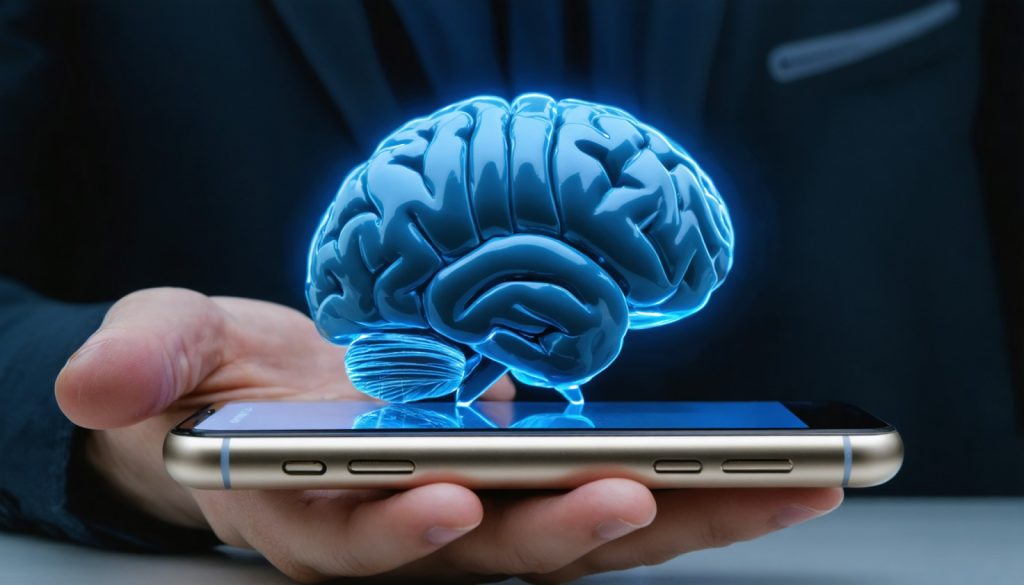
- Smartphones significantly impact how we interact, learn, and perceive the world, similar to addictive substances.
- Research from Heidelberg University and the University of Cologne reveals that smartphone deprivation affects brain areas linked to rewards and cravings.
- The study found that a three-day smartphone break alters activity in the nucleus accumbens and anterior cingulate cortex, areas linked to addiction-like withdrawal symptoms.
- Findings suggest smartphone use may mimic addiction behaviors, as dopamine and serotonin levels shift during deprivation.
- Brief smartphone restrictions can recalibrate neurological processes and provide mental relief, indicating the potential benefits of tech breaks.
- Neuroscientific evidence encourages creating phone-free zones to restore balance, crucial for overall well-being.
- Recognizing our dependence on smartphones emphasizes the need to periodically disconnect to maintain mental health.
Smartphones, those tiny glowing rectangles in our pockets, have reshaped the way we interact, learn, and even perceive the world around us. Their ubiquity and influence grow, shaping modern life and work with profound power. However, recent research from German scientists unveils that our love for this technology might be reshaping our brains in ways that echo the effects of addictive substances.
A study conducted by Heidelberg University in collaboration with the University of Cologne embarked on an exploration of the brain’s response to smartphone deprivation. For three days—72 digital-free hours—participants were observed, revealing an intricate portrait of brain activity in those cut off from their digital lifelines. Scientists honed in on two critical brain areas: the nucleus accumbens and the anterior cingulate cortex. These regions orchestrate the processing of rewards and cravings, and it’s here that the profound revelations of this study emerged.
As the dust settled on their subjective withdrawal from the constant notifications, vibrations, and glow, participants experienced shifts akin to substance addiction withdrawal. The study observed altered activity in the reward-processing centers of the brain, a testament to the overactive dialogue between the neurotransmitters dopamine and serotonin. These potent chemicals, crucial to our feelings of pleasure and satisfaction, appeared recalibrated after the short digital detox.
This revelation prompts a reflection: our reliance on smartphones might mirror behaviors seen in addiction. This is a national—and perhaps global—concern as time spent glued to screens continues to climb. But the findings present a silver lining: even short intervals of smartphone restriction could offer relief and recalibrate our neurological processes.
The implications of this study signal a call to action. With neuroscientific evidence pointing towards the brain’s need for periodic respite from the relentless input of smartphone stimuli, the narrative encourages users worldwide to take control. A conscious effort to carve out phone-free zones can potentially restore balance, offering a therapeutic reset not only for our brains but also for our overall well-being.
In conclusion, as these devices increasingly dominate our landscapes, becoming more an extension of ourselves than mere tools, it’s crucial to recognize the profound influence they wield over our minds. Sometimes, taking a break from technology might not only be beneficial; it may be necessary for maintaining our mental health and reclaiming control over our own reward systems. After all, in a world that never stops scrolling, the power to pause might be our most valuable tool yet.
Are We Addicted to Smartphones? Here’s What Science Says
The Neuroscience of Smartphone Addiction
The recent study by Heidelberg University and the University of Cologne sheds light on the neurobiological changes triggered by smartphone use. By focusing on the nucleus accumbens and the anterior cingulate cortex, researchers have drawn parallels between smartphone dependency and substance addiction. The activity in these brain areas, notably involved in reward processing and craving, highlights the potential addictive qualities of smartphones driven by neurotransmitters like dopamine and serotonin.
Understanding the Findings
– Reward System Alteration: The brain’s reward centers are heavily influenced by smartphone usage. Dopamine, the feel-good neurotransmitter, is activated similarly to how it responds to addictive substances, underlining the compelling nature of smartphone notifications and alerts.
– Withdrawal Symptoms: The study noted withdrawal-like symptoms when participants were deprived of their smartphones, suggesting the behavioral and psychological grip these devices have on users.
How-To Steps & Life Hacks for Digital Detox
1. Schedule Regular Tech-Free Hours: Allocate specific times in your day where you switch off your smartphone. This could be during meals or before bedtime.
2. Create a Tech-Free Zone: Designate certain areas in your home, like the dining room, as device-free spaces to encourage interaction without digital interference.
3. Mindful App Usage: Be selective about the apps you install. Choose ones that add value to your life and eliminate the rest.
4. Utilize Digital Wellbeing Apps: Use apps designed to help monitor your screen time and promote digital wellness by alerting you when you exceed your set limits.
Real-World Use Cases for Smartphone-Free Intervals
Organizations are beginning to understand the benefits of digital detox, implementing policies for mandatory breaks during work hours to enhance productivity and mental wellness. Schools are also experimenting with technology breaks to improve focus and learning outcomes among students.
Market Trends & Future Predictions
With growing awareness of the effects of digital addiction, the tech industry could see a rise in demand for apps and devices that encourage mindful usage. According to industry forecasts, the digital wellness market is expected to expand as users look for ways to balance technology use with mental health.
Pros & Cons of Smartphone Use
Pros
– Connectivity: Provides constant access to information and communication.
– Convenience: Offers tools for daily tasks including scheduling, navigation, and shopping.
Cons
– Addiction Risks: Potentially addictive behaviors and mental health issues.
– Reduced Attention Span: May impair focus and productivity due to constant distractions.
Actionable Recommendations
– Incorporate Breaks: Integrate regular breaks from technology to help regain focus and mental clarity.
– Foster Offline Activities: Engage in hobbies that do not require screen time, such as reading, gardening, or exercising.
– Educate Yourself and Others: Stay informed about the effects of screen time and teach children healthy tech habits.
Conclusion
Taking control over our digital lives not only benefits our mental health but also empowers us to reclaim our time and attention. By understanding the neuroscience behind smartphone addiction, we can make better decisions about our tech use. It’s time to harness the power of a digital detox and embrace the benefits of living in the moment without the constant pings of technology.
For more insights on mental health and technology, consider visiting Psyhology Today for expert articles and advice.



